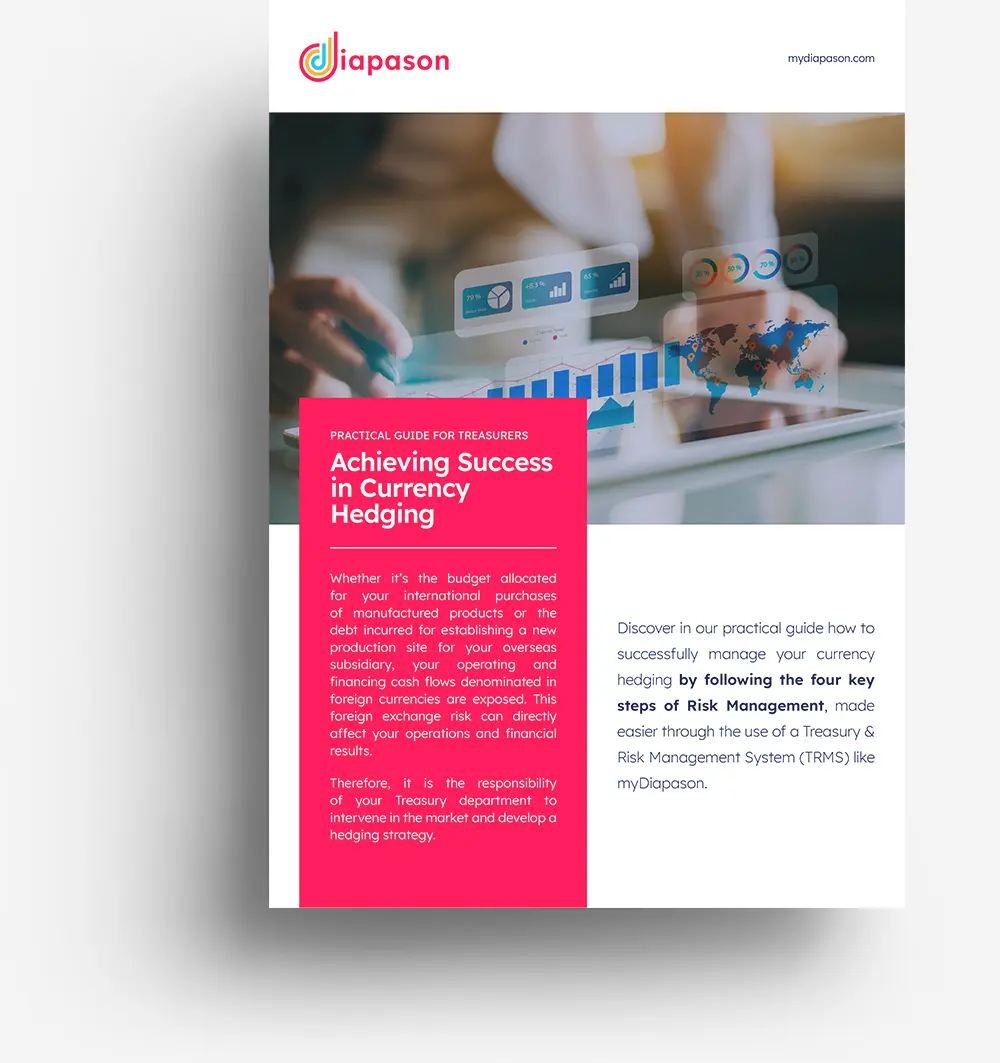
What are the key challenges of Liquidity Management?
Managing liquidity is a critical business issue for Finance and Treasury Directors of large companies. Securing a sufficient liquidity cushion to cover short-term obligations is a constant challenge. In this article, we explore the fundamental principles needed to navigate today’s environment.
What is Liquidity Management?
The difference between Liquidity and Cash
Liquidity and cash are often confused terms. Liquidity refers to all funds immediately available to a company, such as cash on hand and money in current bank accounts. It is the most liquid form of assets. On the other hand, cash, in a broader accounting sense, includes:
- Liquid assets,
- Short-term investments easily convertible to cash,
- Bank overdrafts (considered negative cash).
Cash provides a more comprehensive picture of the company’s short-term financial situation by accounting for both immediately available resources and those that can be quickly mobilized.
Key principles of Liquidity Management
Liquidity management is built around three key principles:
- Solvency: Ensuring sufficient liquidity is available at all times to pay bills, salaries, and short-term commitments.
- Profitability: Liquidity has a cost (e.g., overdraft fees) and earns little return (low interest on deposits). The challenge is to optimize the liquidity cushion: enough to cover forecasted needs but not so excessive that it hampers profitability.
- Security: Liquidity must remain readily available. It’s not advisable to invest in risky or long-term assets that might tie up funds.
Effective liquidity management, and broader cash flow management, are about continuously balancing incoming and outgoing cash flows.
The Challenges of Liquidity Management
Forecasting and planning cash flow
The primary challenge is accurately anticipating all incoming (customer payments, asset sales, VAT refunds) and outgoing (supplier payments, salaries, taxes, loan repayments) cash flows over a 12- to 18-month horizon. Each month, the treasurer prepares a cash flow budget highlighting these flows.
This requires both a high-level annual overview and a detailed month-by-month, or even week-by-week, analysis during critical periods. It’s a complex task since many cash flows are uncertain (sales, investments, inventory levels), forcing the treasurer to make assumptions.
Large companies typically use treasury management software to automate data collection across departments, simulate scenarios, and produce real-time cash flow forecasts.
Balancing profitability and liquidity
The goal of these forecasts is to ensure a sufficient level of liquidity to cover all outgoing payments. Practically, a treasurer aims for a liquidity cushion equivalent to 2 to 3 months of revenue. To achieve this, the following levers can be used:
- Shortening customer payment terms
- Extending supplier payment terms
- Reducing inventory levels (representing tied-up capital) and increasing inventory turnover
- Investing excess cash in safe, liquid assets
- Negotiating credit lines with banks to handle unforeseen events
Regulatory requirements impacting Liquidity Management
Liquidity management also falls within a regulatory framework, especially for large companies. Following the 2008 financial crisis, regulators tightened liquidity rules. Large companies, particularly financial institutions, must constantly meet liquidity-related prudential ratios, including:
- LCR (Liquidity Coverage Ratio): Measures the level of liquid assets required to cover 30 days of needs
- NSFR (Net Stable Funding Ratio): Reflects available stable funding.
Companies that fail to meet these ratios face heavy penalties, including fines and activity restrictions.
What are the Risks related to Liquidity?
Four key risk scenarios pose significant threats to a company’s liquidity:
- Price Risk: The company needs emergency funding to cover an unexpected need (e.g., an overdraft or spot loan) with unfavorable interest rates, impacting profitability.
- Compliance Risk: The company fails to meet a prudential ratio or contractual clause (covenant) related to liquidity levels, exposing it to financial penalties or the early repayment of loans, which could trigger a liquidity crisis.
- Reputation Risk: Rumors of liquidity shortages spread among partners (suppliers, banks, investors), creating a snowball effect: credit lines freeze, payment terms tighten, and stock prices fall…
- Default Risk: To meet immediate obligations, the company sells assets at fire-sale prices or faces bankruptcy if no financing solution is available.
Solutions and software for forecasting
In response to these risks, large companies continually refine their liquidity management and forecasting systems.
Common techniques and tools include
- Cash pooling: Centralizes daily bank balances from subsidiaries into a central account to optimize cash management and reduce the need for external financing. Widely used by multinational corporations.
- Netting: Multilateral settlement of intercompany debts and receivables to reduce cross-border transactions and associated bank fees.
- Factoring: Sells customer receivables to a financial institution (the “factor”) to accelerate cash inflows. The factor may also assume the risk of non-payment.
- Securitization: Sells receivables to a special purpose vehicle (SPV), which issues negotiable securities backed by these receivables. This removes assets from the balance sheet and generates liquidity.
- Currency financing: Raises debt in a low-interest-rate currency to finance needs in a higher-interest-rate currency.
Impact of New Technologies and Liquidity Management
- Treasury functions are undergoing a technological revolution, transforming how liquidity is managed:
- Next-Generation Treasury Software: Powered by real-time APIs, these systems automate position consolidation, collaborative forecasting, and on-demand reporting. Treasurers gain enhanced visibility to better anticipate liquidity needs.
- Instant Payment: SEPA Instant Credit Transfer (SCT Inst) allows funds to be transferred within seconds, 24/7. Treasurers can optimize “intra-day” liquidity management and investment decisions.
- Open Banking: With the PSD2 (Payment Services Directive 2), companies can connect internal systems to banking data and initiate payments without accessing a bank’s portal. This improved fluidity supports proactive liquidity management.
- Artificial Intelligence: AI-powered treasury systems enable more detailed cash flow modeling, anomaly detection, and predictive scenario analysis. This is a valuable tool for securing forecasts in a volatile environment.
Future challenges and trends in Liquidity Management
- The COVID-19 crisis reminded many companies that cash is as vital as human capital or production tools for business recovery. Companies that had anticipated the storm by preserving their liquidity cushion were able to restart faster and capture new growth opportunities. Three major trends have emerged in recent months:
- Automation: Companies are increasingly adopting treasury software with AI to analyze cash in real-time. The challenge is to integrate these systems into existing infrastructures and train staff for effective use.
- Risk Management: Given interest rate volatility, finance and treasury directors are vigilant about liquidity. They work hard to maintain flexible credit lines to meet sudden liquidity needs.
- Cybersecurity: Threats such as payment system hacks and wire fraud are growing. The market for banking security tools, including authentication and biometric systems, is booming.
About the Author
Valérie Lafaury, Chief Marketing Officer
Valérie is the Chief Marketing Officer (CMO) of Diapason, the solution that streamlines corporate treasury management. She crafts press releases, in-depth articles, and timely pieces on topics related to the treasurer’s profession. Her goal is to provide treasurers with useful and practical information to optimize their treasury management.







